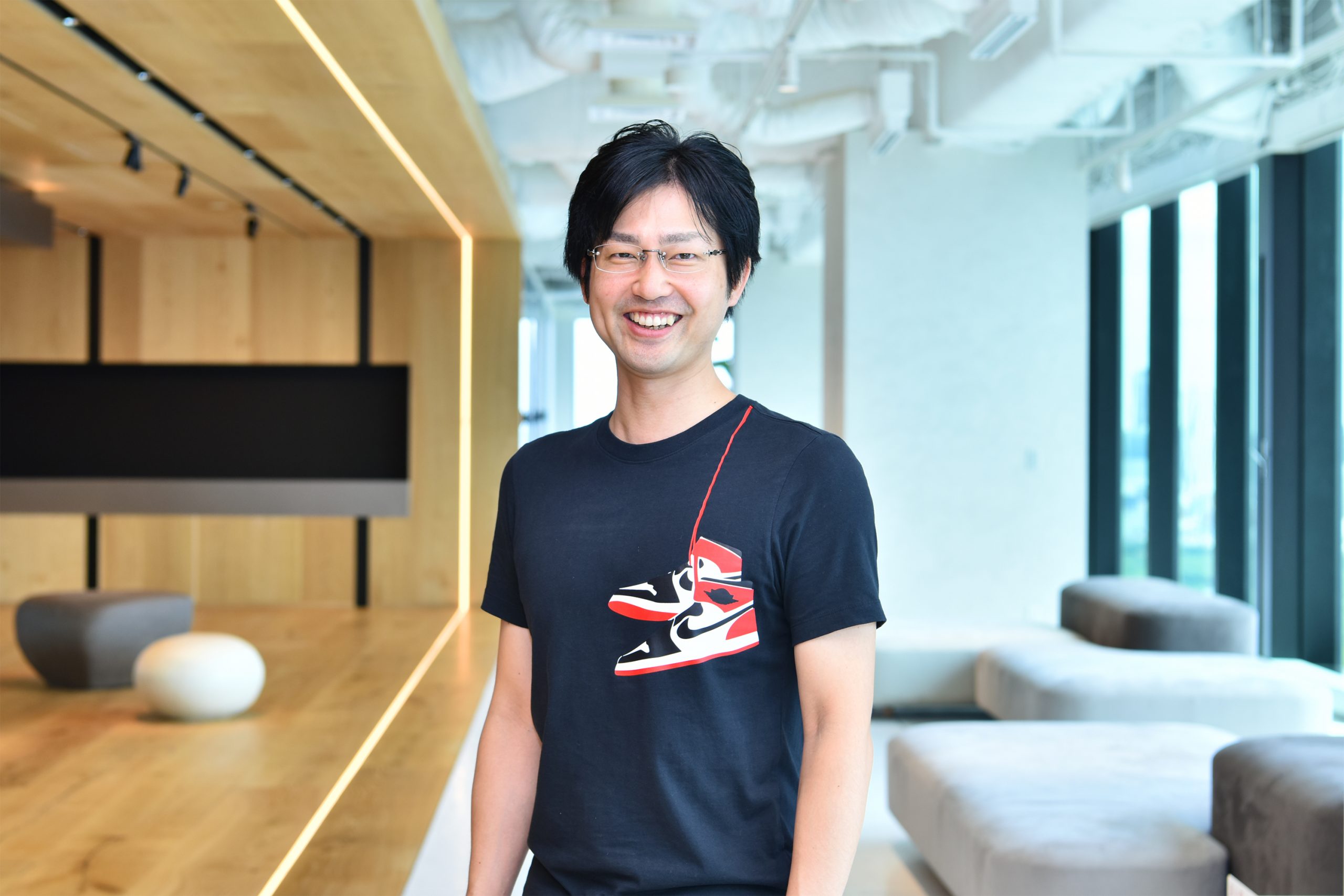Mixi HR team reduces data-based hypothesis testing cycle from 1 month to 15 minutes! Management and HR streamline priorities for people issues with data

INTERVIEWEE
Mr. Atsunori Mizumoto (HRBP, Mixi Monst Business Headquarters)
Motonori Sugimura (Manager, Human Resources Planning Department, Human Resources Division, Mixi, Inc.)
HEADLINE
Mixi Co., Ltd. aims to “formulate and execute conscious personnel strategies and policies based on data” by uniting personnel, management, and sites in order to increase the mobility of organizations with diverse businesses. increase.
We would like to hear from both the perspective of the human resources side and the perspective of the HRBP side that bridges the personnel and the field, why Panalyt was selected to achieve this, and what kind of results have been achieved by the introduction.
(Hereafter, titles are omitted)
CONTENTS

Please tell us about Mixi’s organizational and personnel issues in your opinion.
Sugimura: ” How to make the management layer monolithic about future personnel strategies and policies .” Since the business is strong, the management level of each business division (general manager class and above) has strong feelings, and I feel that it is difficult to formulate personnel strategies and policies company-wide. In addition, even within the Human Resources Headquarters, it was not possible to centrally manage and visualize personnel data, so it was almost impossible to incorporate an organizational perspective into the strategy of the business unit backed by the data.
Mizumoto: Until now, the Monster Strike Business Headquarters has relied on status goals and qualitative goals, but in the future it will be necessary to improve the accuracy of PDCA* by strengthening situational awareness and actions based on numbers, including KPI settings . ..
*The Plan-Do-Check-Act (PDCA) Cycle is a four-step problem-solving iterative technique used to improve business processes.
How would you like to change that sense of challenge with the power of data?
Sugimura: Until now, the explosive growth of Monster Strike has led the organization, and personnel strategies and policies have often been talked about only with qualitative goals, but considering the future business environment, I think it is necessary that we firmly set quantitative goals.
For example, I think that in order to develop excellent executive candidates, we should ensure they experience various departments, but we have not been able to provide quantitative insight into how talent is moving between departments.
On the other hand, there is absolutely an issue of “employee situation that cannot be seen from personnel”, so it is possible that other important insights are overlooked. Therefore, by first aiming for a state where human resources information and data can be shared company-wide, we would like to unify the awareness of personnel, management, and the field .
What was the deciding factor for the introduction of Panalyt?
Mizumoto: I want to make HR data easily accessible and visible in the field.
These two points were the decisive factors. Before I knew Panalyt, I thought that I had to be prepared and introduce BI tools, but it was expected that it would take 6 months just for the preparation period such as database construction and SQL improvement skills.
With Panalyt, we were able to access and visualize personnel data in about a month .
Was it difficult to access and visualize data with existing HR tools?
Sugimura: I think Panalyt is better for getting the whole picture. Then, if you need to take a closer look at your personal information, go to the talent management system.
In addition, we change the organization every month, but with existing tools, it is necessary to process the data into the format specified by the tool and update it each time, so it takes a lot of time and effort to grasp the whole picture.
(Footnote: Panalyt does not require the customer to process the data when connecting)
What was the effect of introducing Panalyt?
Mizumoto: When the business manager asked, for example, “Isn’t there a small number of young new graduates these days?”, I checked the supporting data on Panalyt and was able to respond quickly with screenshots. It took about 15 minutes, but it took more than a month before the introduction of Panalyt.

Why did it take more than a month to collect and visualize data in the past?
Mizumoto: First, I cut the ticket with JIRA (Issue Management Tool) and applied to the Human Resources Headquarters / Labor for a data extraction request.
The labor side also confirms the intention and definition asking “Is this the dataset you want?” So as not to pass wrong data, but this exchange continues for about 5 round trips, even until the data is sent in Excel. It took about 2 weeks.
Based on the Excel data, when I did the work of tabulating, analyzing, and creating the report myself, it took at least one month after I requested the data extraction.
In addition, there are a lot of delays when making an extraction request around public holidays, and multiple stakeholder needs need to be put together. Depending on the content, this sometimes takes more than a month.
Now that we have Panalyt, if we have a hypothesis that we want to test, we can immediately visualize it in the data.
Sugimura: By the way, since the data could not be accessed by anyone other than a limited number of personnel at the Human Resources Headquarters, we had to set up JIRA within the Human Resources Headquarters as well.
Did you achieve any results other than reducing the man-hours for acquiring and visualizing people data?
Sugimura: In the past, we had progressed decisions only through guesses “Much roughly this?”, but with easy access to quantitative insights, we are now able to determine the priority of human resources challenges consciously.
In addition, points and data that are asked at the board of directors and general meetings of shareholders can now be obtained immediately with Panalyt.
For example, with regard to some sense of issues related to promoting the active participation of women and new graduates, I was able to properly verify the data, and find that some issues were “not as serious as originally imagined”, and as a result, the priorities of the issues are changed in a good way.
Mizumoto: Regarding the hiring of engineers, for example, we were able to guide actions more consciously by identifying different trends for the new graduate and mid-career hires with data.
What do you expect from the organization and personnel affairs due to “democratization of people data”?
Sugimura: I think we can finally start “utilizing people data for actions” only now that we can access and visualize data that was previously siloed even within the HR headquarters.
HR must not be a stumbling block in order for an organization to evolve flexibly as its business grows. I think that as the business division has a better sense of numbers, if HR coaches managers on “the perspective of how to view personnel data,” it will be possible to utilize people data under the initiative of the managers .
Mizumoto: I think that HR data should be used not only by human resources but also by everyone involved in management. This should allow personnel to design the organization from the bottom up, rather than from the top down. The Monster Strike Headquarters is approaching that shape, so I think that HRBP will eventually become unnecessary.
I think that you intend to establish HRBPs in addition to the Monster Strike Business Headquarters in the future. What are your thoughts on the requirements for HRBP?
Mizumoto: We want to enable our HRBPs to:
① proactively identify and recognize personnel problems,
② to explore the reason behind issues through rapidly validating/ invalidating hypotheses ,
③ Use quantitative evidence to proactively build their opinion of key people challenges and priorities as compared to just reacting to the demands from the business
We believe immediate access and visualization of HR data will be a weapon to nurture these powers.
Were there any concerns about expanding HR data outside of the HR headquarters?
Sugimura: There is a cautious argument about the release of data, so we’re developing a step by step plan with Panalyt for flexibly setting viewing authority, such as making it impossible to see raw data and narrowing down the employee attributes to be viewed, for business managers and office managers.




